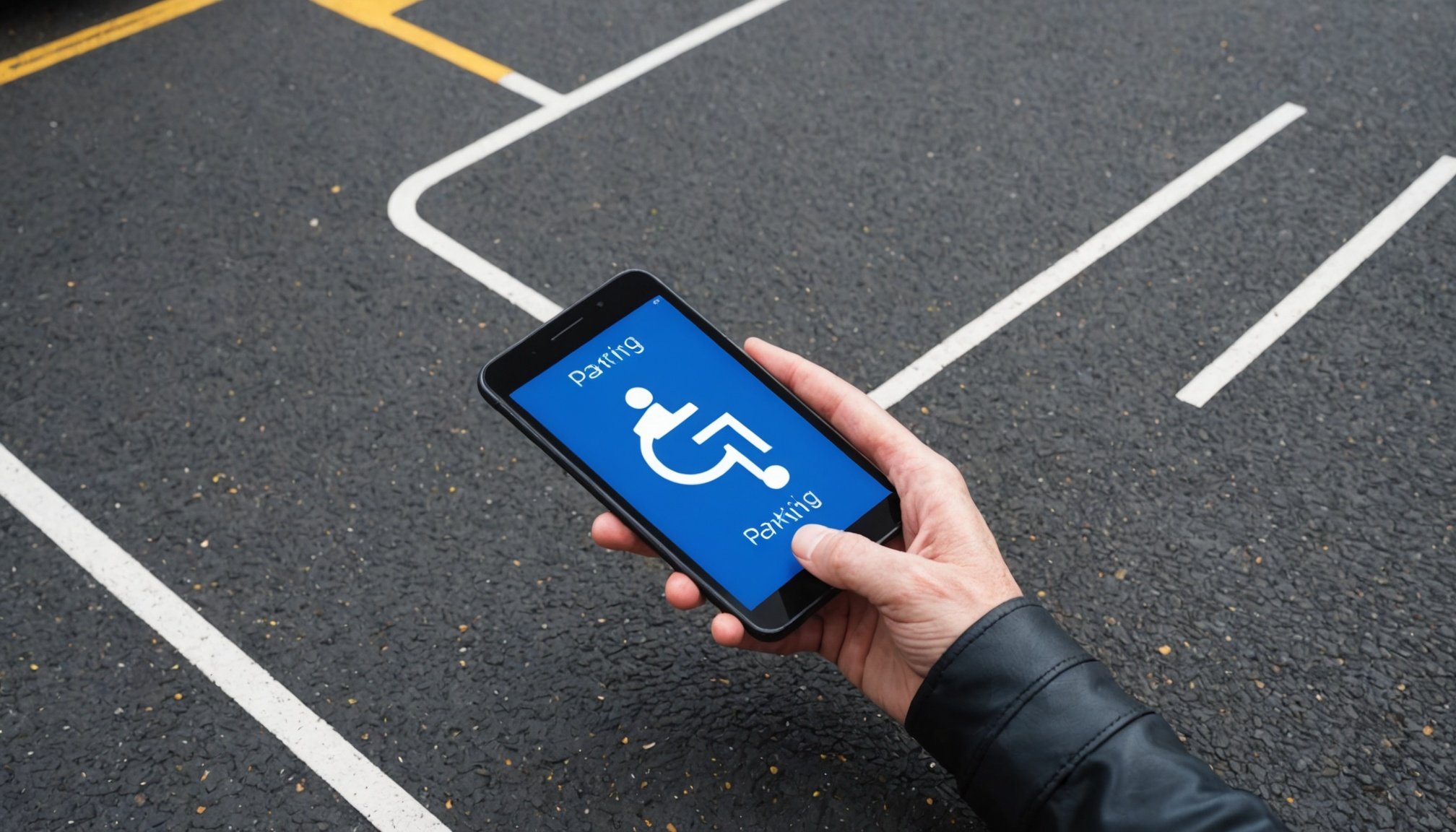Securing a Blue Badge for disabled parking in the UK can feel overwhelming. Yet understanding the process can significantly ease this burden. This guide breaks down eligibility criteria, application steps, and common pitfalls to avoid. With practical tips and insights, it empowers you to navigate the system effectively and access the support you need. Enjoy greater independence and convenience by following this comprehensive roadmap to obtaining your Blue Badge. Let’s get started on your path to easier parking.
Understanding the Blue Badge Scheme
The Blue Badge Scheme is a vital initiative designed to assist individuals with disabilities in the UK. It provides significant benefits by allowing eligible individuals to park closer to their destinations, facilitating easier access to essential services. This scheme is crucial for enhancing mobility and independence for those with limited physical capabilities.
A lire aussi : 2023 Guide: Steps for UK Citizens to Retrieve Their Lost National Insurance Numbers
Disabled parking plays a pivotal role in the daily lives of Blue Badge holders. It ensures that designated parking spaces are available, reducing the distance they must travel on foot. This is particularly important for those with severe mobility issues, as it directly impacts their ability to participate in community activities and access necessary facilities.
In the UK, the Blue Badge Scheme has seen substantial usage, underscoring its importance. Recent statistics reveal that over 2.4 million people benefit from the scheme, highlighting its widespread impact. The demand for Blue Badges continues to grow, reflecting the ongoing need for accessible parking solutions across the country.
A découvrir également : Your Guide to Joining UK Clinical Trials for Innovative Medical Treatments
The scheme not only aids individuals but also supports caregivers and families, alleviating some of the logistical challenges they face. By understanding the significance of the Blue Badge Scheme, we can appreciate its role in promoting inclusivity and equal opportunities for all.
Eligibility Criteria for the Blue Badge
Understanding the Blue Badge eligibility is crucial for those seeking to benefit from this scheme in the UK. The eligibility criteria are designed to ensure that individuals with significant mobility challenges receive the support they need.
Who Qualifies for a Blue Badge?
To qualify for a Blue Badge, individuals must meet specific disability criteria. This includes those who are registered blind, receive certain disability benefits, or have a substantial and permanent disability affecting their walking ability. The scheme also considers individuals who cannot walk or find walking very difficult due to severe mobility issues.
Common Disabilities That Meet the Eligibility Criteria
Several common disabilities qualify for a Blue Badge. These include conditions such as cerebral palsy, muscular dystrophy, and severe arthritis. Individuals with these disabilities often experience significant mobility challenges, making the Blue Badge essential for their daily activities.
Impact of Temporary Disabilities on Eligibility
The scheme also acknowledges temporary disabilities. If a temporary condition, such as a broken leg, severely restricts mobility for a period of at least 12 months, individuals may still be eligible for a Blue Badge. This flexibility ensures that those with short-term but impactful mobility issues can access essential services with ease.
Application Procedures for the Blue Badge
Navigating the Blue Badge application process can seem daunting, but understanding the steps involved can simplify the task significantly.
Step-by-Step Application Process
To begin, individuals need to gather necessary documentation, which includes proof of identity, address, and eligibility. The Blue Badge application can be started online or via paper forms obtained from local councils. Applicants must complete the forms, providing detailed information about their mobility challenges and any supporting medical evidence. Once submitted, applications are reviewed, and decisions are typically communicated within a few weeks.
Online vs. Paper Applications
Choosing between online and paper applications depends on personal preference and access to technology. Online applications offer a faster submission process and immediate acknowledgment of receipt. However, paper applications are beneficial for those less comfortable with digital platforms. Both methods require the same level of detail and documentation, ensuring a fair assessment for all applicants.
Local Authority Involvement
Local councils play a pivotal role in the Blue Badge application process. They are responsible for assessing applications, conducting mobility assessments if necessary, and issuing the badges. Each council may have slightly different procedures, so it's advisable to consult directly with them for specific guidance. This ensures applicants receive tailored support and accurate information.
Required Documents for Application
Understanding the Blue Badge documents needed for a successful application in the UK can streamline the process significantly. Proper preparation ensures a smoother experience and increases the likelihood of approval.
Essential Documents for Application
Applicants must provide several key documents. These include proof of identity, such as a passport or driving licence, and proof of address, like a utility bill or bank statement. Additionally, documentation demonstrating eligibility, such as medical evidence or benefit award letters, is crucial.
Importance of Medical Evidence and Assessments
Medical evidence is a critical component of the application. It substantiates the applicant's mobility challenges, providing a clear picture of their condition. This can include letters from healthcare professionals, detailed medical reports, or results from mobility assessments. These documents help councils assess the severity of the applicant's disability and determine eligibility accurately.
Tips for Organizing and Submitting Documents
To ensure a complete submission, applicants should:
- Gather all required documents before starting the application.
- Organize documents in a logical order, ensuring clarity.
- Double-check that all information is up-to-date and accurate.
- Consider making copies of all documents for personal records.
By following these guidelines, applicants can enhance their chances of a successful Blue Badge application.
Tips for a Successful Blue Badge Application
Applying for a Blue Badge in the UK requires careful attention to detail to ensure a successful outcome. Here are some essential tips to enhance your application process.
Common Pitfalls to Avoid
One of the most frequent errors in the Blue Badge application is submitting incomplete or incorrect documentation. Ensure all required documents are included and up-to-date. Avoid vague descriptions of your disability; instead, provide clear, detailed information about your mobility challenges. This precision helps assessors understand your situation thoroughly.
How to Present Your Case Effectively
To strengthen your application, articulate your mobility difficulties clearly and concisely. Use specific examples to illustrate how your disability impacts daily life. Supporting your case with medical evidence or letters from healthcare professionals can substantiate your claims. Highlighting the practical benefits a Blue Badge would offer in terms of improving access and independence is crucial.
Importance of Accurate and Honest Information
Honesty is paramount in the Blue Badge application process. Providing accurate information not only builds credibility but also ensures a fair assessment. Misrepresenting your condition can lead to application denial or future complications. Double-check all entries for accuracy and completeness before submission, enhancing the likelihood of a successful application.
Fees and Charges Associated with the Blue Badge
Understanding the Blue Badge fees and charges in the UK is essential for applicants. The cost of obtaining a Blue Badge can vary depending on the local council, with fees typically ranging from £10 to £20. This fee covers the administrative costs associated with processing the application and issuing the badge.
Funding Options and Financial Assistance
For individuals facing financial difficulties, some local councils offer financial assistance or waivers to help cover the Blue Badge fees. It's advisable to inquire directly with your local authority about available support options. Charitable organisations may also provide grants or funding to assist with these costs, ensuring that financial constraints do not hinder access to essential mobility support.
Renewal Fees and Processes
Renewing a Blue Badge involves a similar process to the initial application, including the payment of a renewal fee. It's important to note that renewal fees are generally the same as the initial application charges. Applicants should start the renewal process well in advance of the badge's expiration to avoid any lapses in eligibility. Ensuring all required documentation is up-to-date will facilitate a smoother renewal experience.
Using the Blue Badge Effectively
Navigating Blue Badge usage involves understanding specific parking regulations across the UK. Each local authority may have variations in rules, making it crucial to familiarise yourself with the guidelines in different areas. Generally, the Blue Badge allows parking in designated disabled bays, on-street parking for free, and sometimes in restricted areas for limited periods. However, always check local signs for specific restrictions.
Understanding Parking Regulations and Restrictions
Parking regulations can differ significantly. While the Blue Badge provides certain privileges, it doesn't exempt holders from all parking rules. For instance, parking on double yellow lines is generally permitted for up to three hours, but only if it doesn't cause an obstruction. Always display the badge clearly to avoid penalties and adhere to time limits where applicable.
Resources for Reporting Misuse or Issues
Misuse of the Blue Badge undermines the scheme's integrity. If you encounter misuse or face issues, report them to your local council. They have systems in place to address such concerns. Additionally, some councils offer online resources and hotlines for reporting abuse, ensuring the scheme remains fair and accessible to those who genuinely need it.











